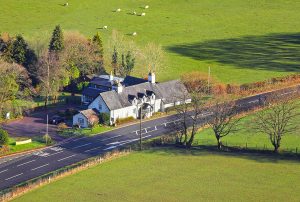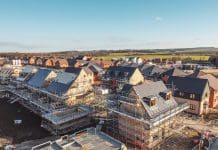Stephen Brooker, Director of Walsingham Planning, argues it is time to update our thinking about the Green Belt
Our regular correspondent, Mark Thackeray, is resting on his laurels somewhere on the Croatian coast but Walsingham Planning lives on (as we will have to on the sad day that Mark retires) so I am picking up one of his regular hobby horses.
Away back in 2012, the then-government published the National Planning Policy Framework (NPPF). There was gnashing of teeth from many sides and cautious welcome from some others. The fanfare told us that 1,000 pages of unnecessary central government policy was to be replaced by just 57 concise pages. In the event, the 1,000 pages are slowly creeping back, with the total now standing at over 700 pages of constantly shifting advice, some of which can get changed without any users realising it to be the case (together with a pretty poor online search facility).
The government’s chief planner, Steve Quartermain, has said that the NPPF itself will be reviewed and that this will be published by the end of the year (we will all be watching the page count!).
In the unlikely event that Mr Quartermain reads these articles, we direct his attention to what seems like a minor backwater of the NPPF but which is, in practice, crucial to the interpretation and impact of Green Belt policy.
The NPPF admits that within the Green Belt, the following exception to the normal presumption against the granting of permission: “The extension or alteration of a building provided that it does not result in disproportionate additions over and above the size of the original building.”
The glossary tells us that the “original building” is “a building as it existed on 1 July 1948 or, if constructed after 1 July 1948, as it was built originally”.
Way back in 1947, when the Rt. Hon. Duncan Sandays addressed the House of Commons to persuade them of the merits of Green Belts, he contemplated the limited rounding-off of small towns and villages as allowable (if only!) and the objectives were only threefold: Check the further growth of large built-up areas; Prevent the merging of towns or; Preserve the special character of towns.
Over the years, PPG2 and the NPPF – and lots of councils reiterating the constraints – have added to the three objectives so that there are now five and somewhere along the line, the notion has been introduced that 1 July 1948 represents a datum point, a utopian ideal, to which we should forever refer.
It makes no sense to keep 1 July 1948 as a datum. The concept of the Green Belt and its objectives have changed (some might say advanced) – but, what is so special about a date now nearly 70 years old?
Earlier in the year the government spent valuable parliamentary time and effort attempting to give public houses greater protection from loss to other uses of the building or demolition.

But, as I sit here writing this article, I look at the pre-application advice of a nameless local planning authority on a very modest scheme to extend a pub that has the misfortune to be located in the Green Belt. All other aspects of the scheme are more or less agreed but then the hammer blow falls. There were extensions in 1964 and 1995 – the building has increased in size by over 50% since 1948, which means a fundamental objection – the wrath of a Green Belt objection comes down upon our heads.
So, the future of a pub, one of two in a small village that inevitably relies upon trade of nearby towns, i.e. relies upon being attractive to the village and a wider clientele in order to survive, and into which our client is willing to put significant investment, is brought into jeopardy. All because it is already bigger than it was almost 70 years ago! So what? Ok, it would be bigger than it was nearly 70 years ago – why is that so important that the future of a rural business employing local people providing a community hub is put in to doubt?
If the government is so worried about the future of pubs to change the General Development Order, is it not illogical to condone (through the NPPF) this sort of resistance to the best possible means to keep a pub open and successful – allow it to evolve and adapt?
Of course, it is not just pubs; lots of other businesses, enterprises and houses are equally impacted and disadvantaged. Of course, a succession of extensions could undermine a limit on new builds. But why 1948? It may have seemed quite sensible as a datum back in the 1970s, but surely it should be reviewed now.
Please Mr Quartermain, look at the NPPF glossary as well as the text when conducting the review and spare us the nonsense of comparisons back to museum piece buildings (and please stop adding to the 700 real pages of advice – or at least tell everyone when there are changes and make the search facility slightly more user-friendly!).
Meanwhile, us consultants can earn an honest crust helping our clients to meet these (and other) difficulties put in our paths and earning permissions – but really, couldn’t we all be doing something more useful? There must be more important planning issues about which to be concerned.
Stephen Brooker
Director
Walsingham Planning
Tel: 01628 532244
Stephen.Brooker@walsingplan.co.uk
Twitter: @town_planners
Please note this article is a commercial profile














